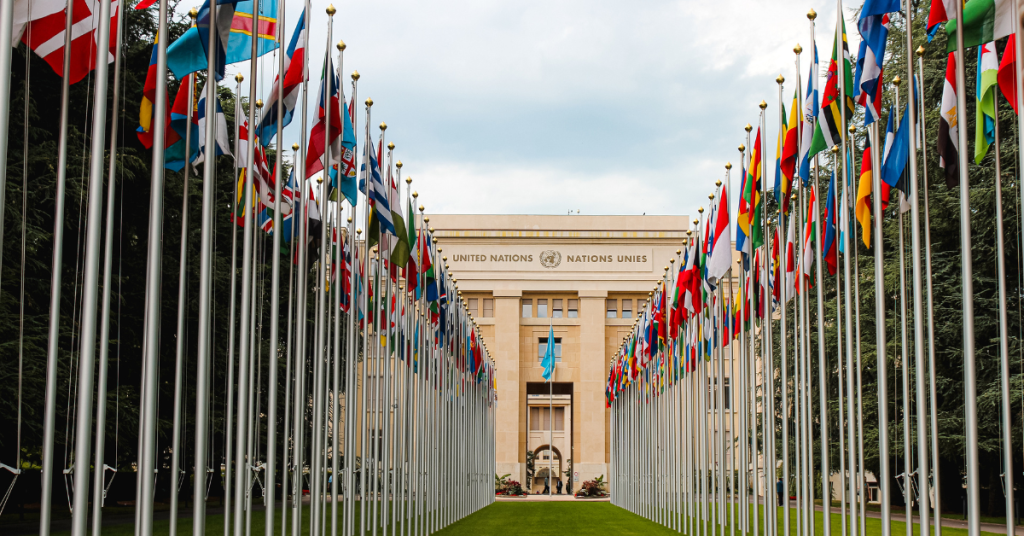Hearing loss is a global issue—one that affects over 1.5 billion people worldwide, according to the World Health Organization (WHO). While it may be easy to think of hearing care as a personal or local concern, the reality is that access to hearing health services, prevention strategies, and public awareness varies dramatically from one country to another. In many parts of the world, people with hearing loss face barriers not just due to medical or technological limitations, but because of cultural stigma, policy gaps, or lack of funding.
As populations age and noise exposure increases, the need for effective hearing care and prevention strategies becomes even more urgent. High-income countries often lead in technological solutions and early screening programs, while many low- and middle-income nations struggle with limited resources and uneven access to care. Yet across the globe, innovative programs and dedicated professionals are finding creative ways to reach underserved populations.
This article takes a global look at how hearing care is delivered and hearing loss is prevented in different parts of the world. From neonatal screenings in Europe to mobile hearing clinics in Africa, we’ll examine the successes, challenges, and emerging strategies shaping the future of hearing health. Whether you’re a healthcare provider, caregiver, or someone concerned about hearing loss, understanding these international perspectives can help foster a more informed and connected approach to global hearing care.
The Global Burden of Hearing Loss
Hearing loss is one of the most prevalent chronic health conditions worldwide, and its impact is growing. According to the World Health Organization’s World Report on Hearing, over 430 million people currently live with disabling hearing loss—a number projected to exceed 700 million by 2050. While hearing challenges affect people of all ages, the burden is particularly heavy among older adults, with nearly one in three individuals over the age of 65 experiencing some degree of hearing impairment.
However, the prevalence and severity of hearing loss are not evenly distributed. Low- and middle-income countries bear a disproportionate share, largely due to limited access to early detection, audiology services, and hearing technology. In many of these regions, infections such as otitis media, untreated ear diseases, and exposure to environmental or occupational noise contribute significantly to hearing damage. In contrast, high-income nations often have stronger public health systems that support early screening and treatment.
The burden of hearing loss goes beyond the ears—it touches virtually every aspect of life. Unaddressed hearing impairment is linked to delayed speech and language development in children, lower academic achievement, increased social isolation in adults, and even a higher risk of dementia. Economically, the global cost of unaddressed hearing loss is estimated at $980 billion USD per year, due to productivity loss, educational support needs, and healthcare expenses.
Despite its scale, hearing loss often receives less attention than other chronic conditions. It is sometimes viewed as an inevitable part of aging or a personal inconvenience rather than a public health priority. This perception can delay diagnosis and limit investment in care and prevention. For many, the lack of hearing support services—especially in rural and underserved areas—means that early signs of hearing loss are overlooked until significant impairment has occurred.
Addressing this global burden requires not only better technology but also widespread education, policy reforms, and culturally sensitive care. As we’ll see next, various countries and regions have developed prevention strategies tailored to their populations and resources—with promising results.
Prevention Strategies Across Continents
Preventing hearing loss before it starts is a top priority for global health systems, but the methods vary widely depending on a country’s infrastructure, economic resources, and public awareness. Around the world, nations are adopting both high-tech and community-based approaches to reduce the incidence of hearing loss, with mixed success.
Neonatal Screening and Early Intervention in High-Income Countries
In many high-income countries such as the United States, Canada, Australia, and parts of Europe, universal newborn hearing screening is a standard part of postnatal care. These programs aim to detect hearing impairment within the first few weeks of life, allowing for early intervention through hearing aids, cochlear implants, or speech therapy. Early detection is critical for language development and academic success.
Public health campaigns also promote noise-induced hearing loss (NIHL) prevention, especially among youth. In the EU, for example, regulations now limit the maximum volume of personal music devices, and schools often include hearing conservation in health education curricula.
Community-Based Programs in Middle-Income Regions
Middle-income nations, such as Brazil, India, and South Africa, are increasingly implementing targeted screening programs—often starting in urban centers or in populations at higher risk. Brazil has developed a national policy for hearing health that includes early screening, free hearing aids, and public education initiatives. India has launched awareness campaigns to reduce NIHL and is scaling up community health worker involvement in basic ear care.
Occupational noise exposure is a major concern in developing economies with large industrial or agricultural sectors. In these areas, occupational hearing conservation programs—including ear protection and regular hearing checks—are gradually being introduced, often with the support of NGOs or employer incentives.
Grassroots and Mobile Solutions in Low-Income Countries
In low-income nations, especially across sub-Saharan Africa and parts of Southeast Asia, infrastructure for hearing care is limited. However, innovative mobile screening units and telehealth platforms are helping bridge the gap. These portable clinics travel to remote villages, offering hearing tests, basic treatments, and referrals. Organizations like the World Wide Hearing Foundation and local NGOs have partnered with governments to deliver these services efficiently.
Additionally, public health efforts to prevent ear infections and manage chronic conditions (like diabetes and hypertension) indirectly support hearing health. Education about ear hygiene, prompt treatment of infections, and immunization against diseases like measles and meningitis can all reduce preventable hearing loss.
While the strategies differ, the goal is the same: to reduce the risk of hearing loss through early detection, education, and access to care. The next section will explore how access to hearing aids and services also varies greatly across the globe—and what’s being done to close that gap.
Access to Hearing Care and Technology Worldwide
Access to hearing care is a critical issue globally, and the disparities between countries—and even regions within countries—are significant. While advanced hearing technologies like digital hearing aids and cochlear implants are commonplace in high-income nations, they remain largely inaccessible to many people in low- and middle-income countries due to cost, infrastructure, and provider shortages.
High-Income Countries: Technology-Driven Solutions
In countries like the United States, Japan, Germany, and the UK, hearing care is typically supported through insurance programs or government health initiatives, especially for children and older adults. Digital hearing aids, cochlear implants, bone conduction devices, and real-time captioning tools are widely available. These nations often have robust audiology networks, enabling consistent follow-up care and personalized adjustments.
However, even in these regions, cost and stigma can prevent people from seeking help. In the U.S., for example, hearing aids are not always covered by Medicare, leaving many older adults without access to necessary devices unless they can afford them out-of-pocket.
Middle-Income Countries: Expanding Infrastructure
In middle-income countries, such as Mexico, Turkey, or Malaysia, access to hearing care is expanding, but gaps remain—particularly outside major urban centers. Public health systems often provide free or subsidized hearing aids, but waiting lists can be long, and follow-up care may be inconsistent.
Tele-audiology is beginning to play a bigger role in bridging access issues. With internet connectivity improving, remote diagnostics and hearing aid programming are becoming viable options, especially in countries with limited audiologist availability.
Low-Income Countries: Creative, Community-Based Approaches
In low-income nations, access to hearing technology is often minimal. The WHO estimates that only 3% of people in need of hearing aids in these regions actually receive them. Challenges include cost, lack of trained professionals, and limited awareness of hearing health.
To address this, several non-profit organizations and public-private partnerships are working to train local health workers to conduct basic hearing assessments and distribute low-cost hearing aids. Community-based rehabilitation programs and task-shifting models—where non-specialist workers deliver primary hearing care—are gaining traction in places like Uganda, Nepal, and Ethiopia.
Solar-powered hearing aids and over-the-counter (OTC) hearing devices are emerging as low-cost alternatives, offering practical solutions in areas without reliable electricity or access to audiologists.
Closing the hearing care gap globally requires innovation, investment, and a commitment to making hearing technology affordable and culturally acceptable. In the next section, we’ll explore how cultural beliefs and stigma shape hearing care access and attitudes in different parts of the world.
Cultural Attitudes and Stigma Around Hearing Loss
Cultural beliefs and social norms play a powerful role in how hearing loss is perceived, diagnosed, and treated across the world. In many societies, stigma around hearing impairment and the use of hearing aids can prevent individuals from seeking care—even when services are available. Understanding and addressing these cultural attitudes is essential for effective hearing health promotion and prevention strategies.
Stigma and Aging
In numerous cultures, hearing loss is seen as an inevitable part of aging and is therefore dismissed rather than treated. In parts of Europe, North America, and Asia, some older adults resist wearing hearing aids because they associate them with frailty or decline. This stigma can delay intervention, leading to greater social isolation, cognitive decline, and reduced quality of life.
Educational campaigns aimed at “normalizing” hearing aid use—similar to campaigns for eyeglasses—are making headway in shifting perceptions. Advertisements featuring younger users and stylish hearing aids are helping reduce resistance and promote earlier adoption of hearing support.
Disability and Shame
In some cultures, hearing loss is viewed as a disability that brings shame to individuals or their families. This is especially pronounced in parts of South Asia, the Middle East, and sub-Saharan Africa, where disability may be associated with spiritual beliefs, karma, or family misfortune. As a result, children with hearing impairment may be hidden from public view, excluded from mainstream education, or denied proper care.
To combat this, inclusive education policies and community-based rehabilitation programs are helping change perceptions. Empowering local advocates—often individuals with hearing loss themselves—can also break down harmful stereotypes and promote acceptance.
Cultural Barriers to Technology Use
In some communities, even where hearing aids are available, there may be distrust of foreign or modern technology. Language barriers, lack of instruction on device use, and absence of follow-up support further discourage sustained use. For example, users may abandon their devices if they amplify background noise or if no one explains how to adjust the volume.
Solutions include culturally tailored health education, training sessions in local dialects, and community audiology support. Programs that involve family members and local leaders often see greater success in building trust and adherence.
Positive Cultural Models
Despite these challenges, there are encouraging examples of cultures that embrace hearing care as a communal responsibility. In Scandinavian countries, for instance, hearing health is deeply integrated into social welfare and elder care systems. In Japan, respect for elders has supported early interventions and consistent device use among older adults.
Ultimately, addressing cultural stigma requires sensitivity, education, and local engagement. When hearing loss is viewed not as a weakness but as a health condition that can be managed, individuals are more likely to seek help—and benefit from it.
Next, we’ll look at how global organizations and policy initiatives are working to standardize hearing care and prevention worldwide.
The Role of Global Organizations and Policy
Tackling hearing loss on a global scale requires more than local efforts—it demands coordinated policy, international partnerships, and a shared commitment to equitable care. Global organizations such as the World Health Organization (WHO) have taken a leading role in advancing hearing health awareness and promoting standards for care and prevention across countries.
The World Report on Hearing
In 2021, the WHO released the World Report on Hearing, a landmark document outlining a comprehensive, evidence-based framework for integrating ear and hearing care into national health systems. The report highlights the urgent need to scale up hearing services and includes a roadmap for countries to follow, emphasizing prevention, early identification, and community-based rehabilitation.
The report’s “H.E.A.R.I.N.G.” package—a set of recommended public health interventions—calls for investments in hearing screening, training of hearing care providers, accessibility of hearing technologies, and anti-stigma education. The WHO encourages governments to view hearing care as a cost-effective and essential part of universal health coverage.
Policy Integration and National Strategies
Countries that have aligned their health systems with WHO guidance are beginning to see progress. For example, Rwanda and Kenya have launched national ear and hearing care strategies that include training community health workers and integrating basic hearing tests into primary care. Australia’s Hearing Services Program provides free hearing assessments and devices to eligible citizens, serving as a model for universal access.
Meanwhile, the EU and the U.S. continue to fund research on hearing loss and support educational campaigns to improve public awareness and reduce stigma. Policies are increasingly aimed at expanding access to over-the-counter hearing aids and improving noise regulation standards in workplaces and urban areas.
Non-Governmental and International Collaborations
NGOs like the International Federation of Hard of Hearing People (IFHOH) and World Wide Hearing work globally to distribute hearing aids, train professionals, and advocate for policy changes. Collaborations between local governments and international partners help build sustainable programs tailored to specific cultural and economic contexts.
Telehealth initiatives are also gaining support through international grants and tech partnerships, making remote hearing care a reality in underserved regions.
The Push for Global Equity
Despite these advances, hearing care remains deeply unequal. The WHO has stressed the need for increased global investment, estimating that an additional $1.33 per person per year could dramatically improve ear and hearing care access in low- and middle-income countries—yielding a nearly tenfold return in health and productivity benefits.
As the global population ages and urban noise exposure rises, coordinated policy efforts and international solidarity will be crucial. Governments, NGOs, and communities must work together to ensure that hearing care is not a privilege, but a universal right.
Conclusion
Hearing loss is a universal challenge, but the way it’s understood, treated, and prevented varies widely across the globe. From neonatal screening in hospitals in Sweden to mobile hearing clinics in rural Kenya, the diversity of approaches reflects the complexity of global healthcare systems, cultures, and economies.
What’s clear is that no one-size-fits-all solution exists. Yet despite differences in resources and infrastructure, many countries are finding innovative ways to prevent hearing loss and provide care to those who need it. High-income nations are leading with advanced technologies and strong public health systems, while low- and middle-income countries are adapting with community-based programs, mobile clinics, and tele-audiology services.
Still, inequity remains a major barrier, with millions of people—particularly in underserved or rural regions—lacking even basic access to hearing tests or hearing aids. Cultural stigma and lack of awareness further compound the issue, preventing people from seeking or accepting the help they need.
Global organizations like the WHO are working to change this landscape by promoting policy, education, and investment in hearing health. Their vision is one of inclusive, accessible care where early detection and prevention are integrated into everyday healthcare services.
As individuals, caregivers, or healthcare professionals, we can all play a role in advocating for hearing health—whether by supporting awareness campaigns, encouraging early screening, or pushing for inclusive policy in our communities. When we embrace international insights and work collectively, hearing care becomes more than a medical service—it becomes a global movement for equity, dignity, and quality of life.
FAQ
How common is hearing loss globally?
According to the World Health Organization, over 430 million people worldwide have disabling hearing loss, and that number is expected to rise to over 700 million by 2050. It is one of the most common chronic health conditions globally, affecting people across all age groups.
Why is access to hearing care unequal across countries?
Access depends on a country’s economic resources, healthcare infrastructure, and public awareness. High-income nations often provide screening and hearing devices through public health systems, while low-income countries may lack specialists, equipment, and funding. Cultural stigma and lack of education also play a role in preventing people from seeking care.
What are some effective hearing loss prevention strategies?
Effective strategies include universal newborn hearing screening, noise regulation in workplaces, public awareness campaigns, immunization programs, and early treatment of ear infections. Community outreach and tele-audiology services are also helping expand access in underserved areas.
How does culture influence attitudes toward hearing loss?
In some cultures, hearing loss is associated with aging, disability, or shame, which can discourage people from using hearing aids or seeking help. Educational programs and culturally sensitive care are essential to changing these perceptions and encouraging early intervention.
What is the WHO doing to promote hearing care worldwide?
The WHO’s World Report on Hearing outlines a global action plan for integrating hearing care into health systems. It advocates for early screening, affordable hearing technologies, community-based services, and anti-stigma education. The organization is also pushing for greater investment to ensure equitable access in low- and middle-income countries.
This article is for informational purposes only and is not a substitute for professional medical advice, diagnosis, or treatment. If you are concerned about your hearing or ear health, please consult a qualified healthcare provider.






